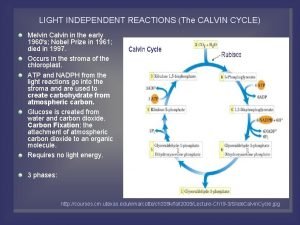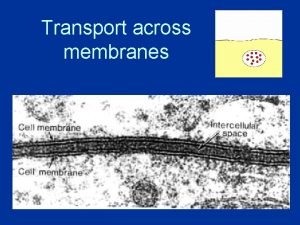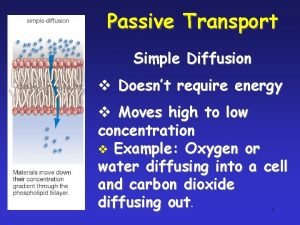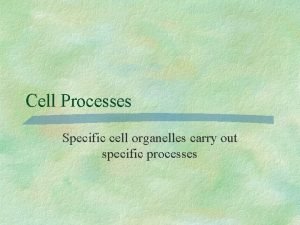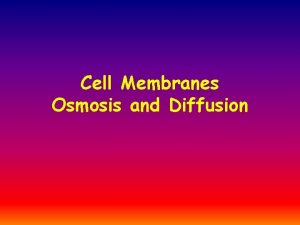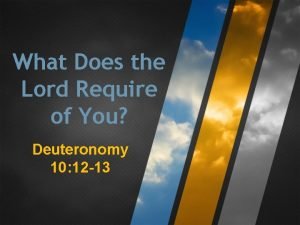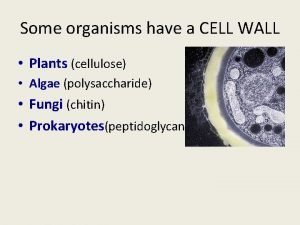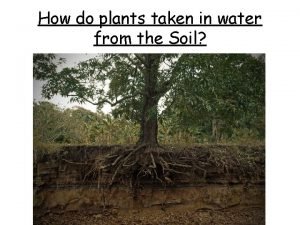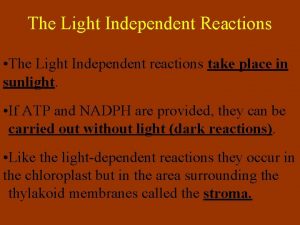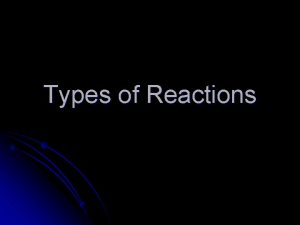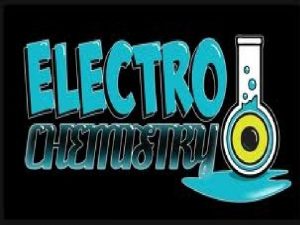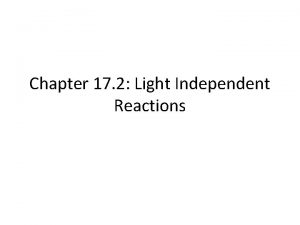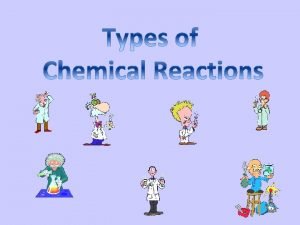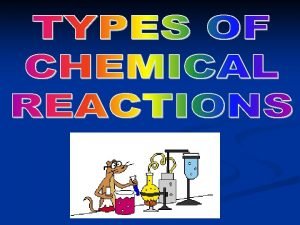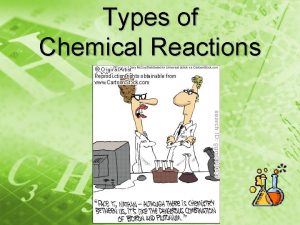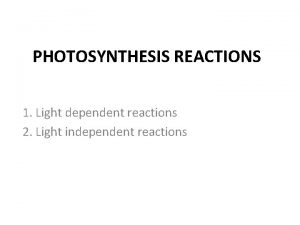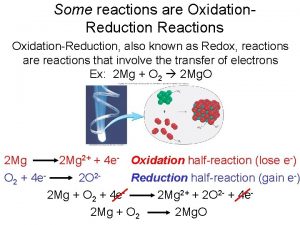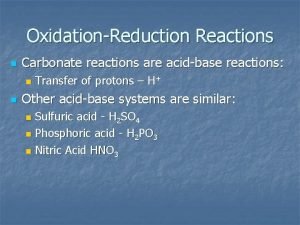Light Independent Reactions Does require light Also known

















- Slides: 17

Light Independent Reactions • Does require light • Also known as the • Occur in the of the chloroplast • Glucose is which requires: a. energy in the form of and (there has to be enough) b. H since each glucose molecule has 12 H atoms

The Calvin-Benson Cycle • The Calvin cycle molecules enter and leave the cycle its starting material after • CO 2 enters the cycle and leaves as • The cycle spends the energy of ATP and the reducing power of electrons carried by NADPH to make the sugar • The actual sugar product of the Calvin cycle is not glucose, but a three-carbon sugar,

• Each turn of the Calvin cycle • For the net synthesis of cycle must take place . . molecule, the times, fixing • To make glucose molecules would require cycles and the fixation of molecules. • The Calvin cycle has three phases.


Light Independent • Occurs in 3 stages: • Step 1: • Ru. BP ( joins with CO 2 (catalyzed by ) to form an 6 carbon molecule which splits to become (phosphoglyceric acid) )

Light Independent • Step 2: • The 3 carbon compounds are activated by and then by • The molecule now become • 2 step 3 (given energy) (given more energy) molecules known as molecules move on to make glucose, go to

Light Independent • Step 3: • Remaining PGAL will be used to make • ATP will help break and bonds to make the chemical

Calvin Benson Cycle – more details 8

9

Let’s Put It All Together…

Photosynthesis Stores Energy in Organic Compounds Review • Photosynthesis consists of two separate sets of chemical reactions: lightdependent and light-independent reactions. light-dependent reactions NADPH ATP chemiosmosis light-independent reactions

Photosynthesis Stores Energy in Organic Compounds Review • Chlorophylls a and b and the carotenoids are photosynthetic pigments that absorb light.

Photosynthesis Stores Energy in Organic Compounds Review • Light energy trapped by a pigment molecule excites electrons. • When an electron in photosystem II is excited, it is transferred to and then passed along an electron transport system.

Photosynthesis Stores Energy in Organic Compounds Review • Energy released during electron transport is used to force hydrogen ions across the thylakoid membrane and create a concentration gradient. • Energy from the concentration gradient is used to generate ATP from ADP and phosphate by means of chemiosmosis. As hydrogen ions move down their concentration gradient, they drive the reaction that generates ATP.

Photosynthesis Stores Energy in Organic Compounds Review • An electron from water replaces the electron that was lost from photosystem II. The oxygen from the water molecule is converted to molecular oxygen. • When an electron from photosystem I is excited, it is eventually used to reduce NADP+ to NADPH.

Photosynthesis Stores Energy in Organic Compounds Review • The series of reactions that synthesize carbohydrates is the Calvin. Benson cycle, which occurs in the stroma. • In this cycle, carbon dioxide combines with Ru. BP to form a sixcarbon compound that immediately splits into two three-carbon compounds.

Photosynthesis Stores Energy in Organic Compounds Review • ATP and NADPH from the light-dependent reactions provide energy and reducing power to form PGAL from the newly formed three-carbon compounds. • Six cycles produce 12 PGAL molecules, 10 of which regenerate Ru. BP and 2 of which are used to make glucose.
 Light independent reactions
Light independent reactions Bill nye light optics
Bill nye light optics Section 2 classifying chemical reactions worksheet answers
Section 2 classifying chemical reactions worksheet answers Redox half reactions
Redox half reactions Section 2 classifying chemical reactions
Section 2 classifying chemical reactions Chemical reactions section 3 reactions in aqueous solutions
Chemical reactions section 3 reactions in aqueous solutions Unit 5 chemical reactions answers
Unit 5 chemical reactions answers Membrane-bound organelles
Membrane-bound organelles Facilitated diffusion high to low
Facilitated diffusion high to low Header in apa format
Header in apa format Does simple diffusion require energy
Does simple diffusion require energy Does exocytosis require energy
Does exocytosis require energy Does facilitated diffusion require a transport protein
Does facilitated diffusion require a transport protein What does the lord require of you deuteronomy
What does the lord require of you deuteronomy Does osmosis require energy
Does osmosis require energy Does osmosis require a partially permeable membrane
Does osmosis require a partially permeable membrane Diffusion vs facilitated diffusion
Diffusion vs facilitated diffusion Recruiting and retaining capable employees
Recruiting and retaining capable employees
